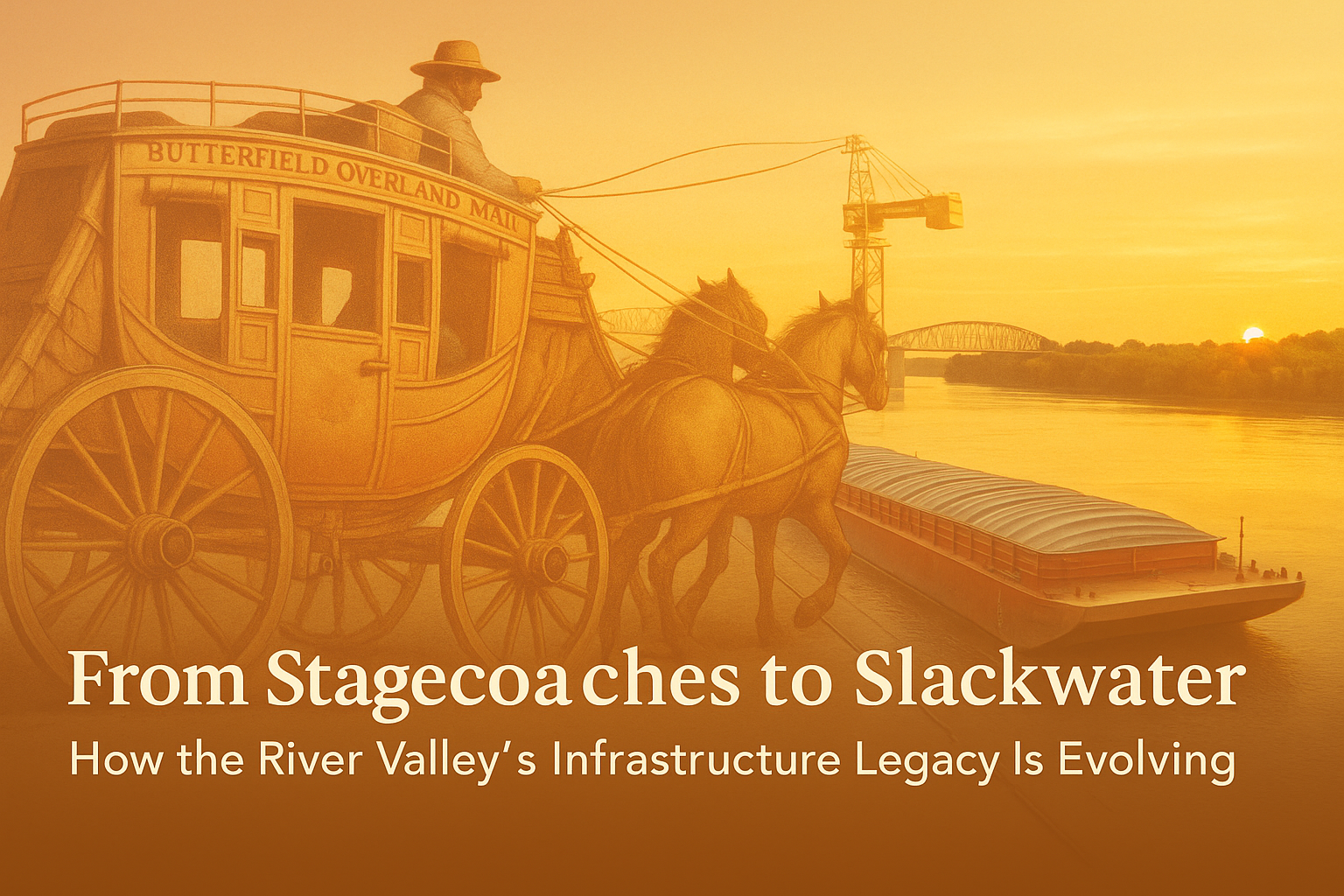From Stagecoaches to Slackwater: River Valley Infrastructure Projects Continue a 150-Year Legacy
The Butterfield Dispatch
Archives
From Stagecoaches to Slackwater: River Valley Infrastructure Projects Continue a 150-Year Legacy
SIGN UP FOR OUR NEWSLETTER
🚢 From Stagecoaches to Slackwater: How the River Valley’s Infrastructure Legacy Is Evolving |
Modern Harbor Projects Echo the Trail That Once Carried Stagecoaches |
In 1858, the Butterfield Overland Mail carried passengers and mail through Fort Smith on a journey that stretched from St. Louis to San Francisco.
It was a trail of connection — linking east and west, frontier and frontier, with grit, horses, and iron wheels.
Today, that same idea of connection is alive again along the Arkansas River, where new infrastructure projects promise to renew the River Valley’s role as a hub of trade and transportation.
The Slackwater Harbor Project: A River Edge Reimagined
One of the most transformative efforts underway is Slackwater Harbor in Van Buren, a long-planned harbor and freight expansion that will reshape how the River Valley interacts with the waterway that built it.
Construction is expected to begin in April 2026, with completion targeted for early 2027.
The $18.16 million project, backed by a $15.1 million federal MARAD grant, will create a 1,000-foot-long, 200-foot-wide harbor featuring nearly 2,000 feet of dock frontage and space to handle up to eight barges at once.
The Western Arkansas Intermodal Authority and the Western Arkansas Planning & Development District are leading the initiative — but not without challenges.
Recent reports note bureaucratic slowdowns, though local and federal leaders remain confident that the timeline can stay on track.
When finished, Slackwater Harbor will enhance barge access, reduce congestion on the main channel, and strengthen the region’s appeal to industries that rely on efficient multimodal shipping. Anchoring History: A Legacy of Movement
The River Valley has been a transportation corridor since long before the interstate era. In the 1800s, steamboats carried mail, freight, and travelers along the Arkansas River to and from Fort Smith, serving as lifelines for frontier commerce.
That history continued with the McClellan-Kerr Arkansas River Navigation System (MKARNS) — a massive mid-20th-century project that turned the river into a commercial waterway stretching from Tulsa to the Mississippi.
Key landmarks like the W. D. Mayo Lock and Dam and John Paul Hammerschmidt Lake are not static monuments, but living components of an active trade network.
They keep the river navigable, linking Fort Smith and Van Buren to national and international markets through the Mississippi River and Gulf of Mexico.
The same riverbanks where Butterfield’s stagecoaches once rolled now anchor barges, cranes, and warehouses — a living reflection of the region’s enduring role in moving the nation forward. Why It Matters for the River Valley Today
A New Chapter on an Old Trail
From the Overland Mail to modern river freight, the River Valley’s story has always been about movement — people, goods, and ideas finding their way through Arkansas to the wider world.
The Butterfield Trail once carried the nation’s messages.
Now, projects like Slackwater Harbor carry its future. |

